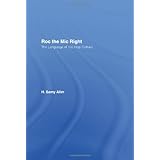
Average Reviews:

(More customer reviews)I am currently writing a book on the making of "Patton" and was eager to read this George C. Scott biography, given the actor's key role in that film. I write this review with mixed feelings.David Sheward has done an impressive job of interviewing Scott's friends and family in an effort to develop the man's personality and character. He has also consulted the numerous interviews that Scott did throughout the years. These resources are usually the only type of primary resources available for doing the history of the film industry. When I was in school at USC, I quickly learned that Hollywood does a horrible job of preserving its written records.
The result is that Sheward has some news stories tell about Scott. The man was a brilliant actor with few peers, but he was horrible insecure and full of self-loathing. When things went wrong, be it on the set or in his personal life, he got angry, really, really angry. He overcompensated with the bottle and alcohol only fueled his rage. Film buffs, however, have known about Scott's personal demons for years; he was quite upfront about them.
The ultimate problem with this book is that it offer its readers no new insights into the man. Sheward--through no fault of his own--never interviewed his subject and had no direct access to letters, diaries, or oral histories. As a result, you get a feel for how Scott moved through the acting profession and how many people felt about him, but the man himself seems a little absent from his own story.
Click Here to see more reviews about: Rage and Glory: The Volatile Life and Career of George C. Scott
George C. Scott (1927-1999) born in Wise, Virginia, created some of the 20th century's most memorable performances on stage and screen - the cunning prosecutor in Anatomy of a Murder, the manipulative gambler in The Hustler, the buffoonishly warmongering chief of staff in Dr. Strangelove, and, of course, the brilliant and rebellious Patton. He also played Willy Loman, Richard III, Mussolini, Scrooge, Fagin, and countless others. But his offstage life was as filled with drama and controversy as any of the lives he portrayed with such intensity. He refused the Oscar for Patton, battled with TV networks to include realistic elements in his series East Side/West Side, invested (and lost) his own money on Broadway and in the scandalous film The Savage is Loose, married five times (twice to Colleen Dewhurst) and had a tempestuous affair with Ava Gardner, traveled to Vietnam at the height of the war to write an article for Esquire magazine, and weathered a damaging sexual harassment suit. In the first complete biography of this great star, David Sheward documents Scott's artistry as well as his roller-coaster career. Featuring interviews with numerous colleagues including Nathan Lane, Karl Malden, Piper Laurie, and Eva Marie Saint, as well as friends and family members, Rage and Glory pays tribute to one of our finest and fieriest actors.




















